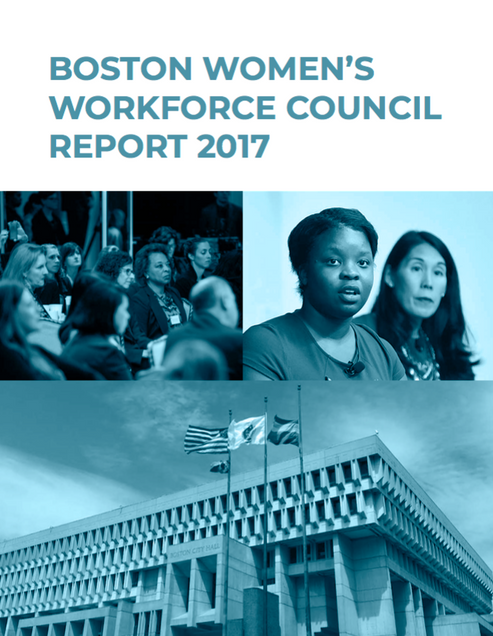Mayor Walsh & BWWC Release 2017 Wage Gap Report
 The Boston Women’s Workforce Council released its 2017 report this morning, which uses real employer wage information to assess the pay gap in Boston. The 2017 report leverages the wage data of 114 companies and 166,700 employees, representing 16 percent of the Greater Boston workforce and nearly $15 billion in total compensation. The analysis found a 24 cent wage gap, meaning that, on average, women in the sample earned 76 cents for every dollar earned by men.
The Boston Women’s Workforce Council released its 2017 report this morning, which uses real employer wage information to assess the pay gap in Boston. The 2017 report leverages the wage data of 114 companies and 166,700 employees, representing 16 percent of the Greater Boston workforce and nearly $15 billion in total compensation. The analysis found a 24 cent wage gap, meaning that, on average, women in the sample earned 76 cents for every dollar earned by men.
The Boston Women’s Workforce Council (BWWC) is a rst-in-the-nation public-private partnership that uses real employer wage information to assess the pay gap via an innovative, confidential data reporting system. One year ago, the BWWC moved to the Hariri Institute for Computing at Boston University, in an effort to expand the existing collaboration with University researchers. ‘
For the past four years, Hariri Institute researchers and software engineers from the University’s Software & Application Innovation Lab (SAIL) have worked with the BWWC to develop a secure software platform that uses privacy-preserving analytics to enable aggregation and detailed analysis of real wage data. The platform is unique in that it enables the computation of aggregate pay equity analytics without the risk of revealing any sensitive, company-specific information to any party involved in the process, whether that party is another 100% Talent member company, the BWWC, or BU (the platform owner and operator).
Boston Women’s Workforce Council 2017 Report Highlights
The BWWC added 50 new 100% Talent Compact signers this year. The Compact has been signed by over 225 companies and nonprofits in the Greater Boston area to date.
- Every other year, the BWWC conducts an anonymous wage data submission to measure the wage gap in Boston. These data are unique because they:
- Are employer-provided salary data (as opposed to employee-provided Census data)
- Cover Metro Boston, creating a previously unknown regional wage gap estimate
- The 2017 reporting cycle included 114 companies and 166,700 employees, representing 16 percent of the Greater Boston workforce and nearly $15 billion in total compensation.
- The wage gap is 24 cents, meaning women in our sample, on average, earned 76 cents for every dollar earned by men.
- Consistent with other surveys, the gender wage gap varied by race:
- White women: 75 cents compared to White man’s dollar
- Asian women: 71 cents compared to White man’s dollar
- Black/African American women: 52 cents compared to White man’s dollar
- Hispanic/Latina women: 49 cents compared to White man’s dollar
- The wage gap also varied by job category. On average:
- Female Administrative Workers out-earn their male colleagues, $1.02 to $1.00
- Smallest gaps were for Craft Workers & Operatives: women earn 88 cents compared to a man’s dollar
- Largest gaps were for Sales Workers and Service Workers: women earn 63 cents and 57 cents compared to a man’s dollar, respectively
- On average, cash performance pay made up 5% of annual total compensation for women and 11% of annual total compensation for men. On average, across all races and job categories, women in our sample made 30 cents for each dollar of cash performance pay men made.
- In 2018, the BWWC seeks to:
- Continue to grow the Compact network by recruiting the remaining large employers in Greater Boston;
- Build alliances with other organizations and businesses help advance women;
- Prioritize upward mobility of women and people of color within organizations;
- Focus on the intersection of race and gender as it applies to pay equity; and
- Engage more male allies in in this work.
[Access the full Boston Women’s Workforce Council 2017 Report]